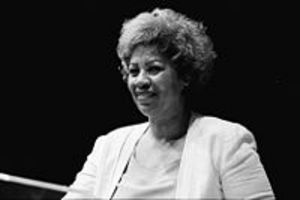Throughout history, race has affected people’s lives from day to day. Whether that is in the form of employment, education, or economic status, race is a prime factor. In this race analysis, I am going to investigate relationships between different races. More specifically, I will be looking at the relationship between black and white in Toni Morrison’s Beloved, and the way color affects the characters in the story. I will consider the challenges they face, and whether or not this was a result of racial prejudice as well as how the situation would have been different if a character of opposing race had faced the same hardships. The typical outcome would be that the characters of darker color would face more hardships than the other characters, and this is what I predict will happen throughout this particular novel. Taking the time period of the novel into consideration, it is obvious that there will be issues of slavery and segregation, which are both problems that revolve around race. According to Moglen (1993), “Beloved’s story is a story of personal and collective loss: the deprivation of home, abandonment by an enslaved mother, the erasure of a disinherited father, the alienation of her body in rape and of her mind in the shattering of the mirror of identity” (p. 23). Because Morrison based her novel off of factually documented events in the life of Margaret Garner, the reader is able to see racial issues on a deeper level. Not only do we see the issue of slavery the manifests itself in flashbacks of Sweet Home, but we also see just how much this history affected the lives of the people living at 124 through the ghost of Beloved and stories from both Sethe and Denver. According to Berger (1996), “The accounts in the novel of life at Sweet Home and of Sethe’s and Paul D’s escapes from slavery lead unswervingly toward Beloved’s death; likewise, the events the follow the murder remain charged with its horror and cannot be interpreted apart from it” (p. 409).
Many analyses have been done on this novel and the depiction that Morrison is able to develop through the way that she writes. “Beloved‘s narrative spirals around, is ordered by, a traumatic event whose model is historical” (Berger, p. 409).
In The Negro Family in the United States (1939), Frazier described the history of the black family life as a series of wrenching dislocations, the first of which was the nearly total removal from African culture: “Probably never before in history has a people been so nearly completely stripped of its social heritage as the Negroes who were brought to America” (15). Lacking a culture, the slaves were forced to adapt to, the culture imposed by their masters. After this adjustment, emancipation arrived as a second apocalyptic cultural break-“a crisis in the life of the Negro that tended to destroy all his traditional ways of thinking and acting. To some slaves who saw the old order collapse and heard the announcement that they were free men, emancipation appeared ‘like notin’ but de judgment day'” (73). The third major disruption in black cultural life came with the great migrations to northern cities in which rural blacks, “uprooted from the soil,” lost their “roots in a communal life and [broke] all social ties” (224). For Frazier, these overarching cultural traumas had specific results destructive to black family life-illegitimate births, the abandonment of families by men, households headed by single women, and thus a family structure Frazier classified as matriarchy. (pp. 412-413).
From this quote, it is easy to dissect the story to find these specific problems. The last sentence of the above quote presents a good starting point for analyzing race issues that come up through flashbacks and in the present time period of the story.
Sethe is a single mother working at a low-paying job. She suffers a mental breakdown and loses her job, and the community must support her. Her sons leave home, never to be seen again. One of her daughters is in capable of leaving home, and Sethe murders the other one. Sethe’s family is certainly dysfunctional, if not…pathological. (Berger, p. 411).
Morrison creates the character of Sethe in this light for the mere reason that she is trying to address the race issue present in the United States. By writing the character this way, she is acknowledging the fact that most white Americans believe all black families live similar to the way of Sethe and her family, and are therefore stereotyping. It is the belief of white people during this era that most black families do have single mothers, males who abandon the family, and one or more illegitimate children. The single mother is manifested in Sethe, the male abandonment is the result of Howard and Buglar leaving 124, and the illegitimate child shows itself in Beloved. Segregation occurs because of ideas like these, and because white parents instill a sort of fear of the black race in their children. Also, there is the overlying issue of white superiority from the slave days, and the idea of ownership. “Schoolteacher, the slave-master who inherits Sweet Home along with Sethe, Paul D, and Halle, beats one of his blacks “‘to show him that definitions belong to the definers, not to the defined'” (Moglen, p. 190). Morrison also addresses this race issue in Beloved when talking about the schoolteacher and the sheriff’s arrival in Baby Suggs’ yard.
In a perfect Foucauldian constellation, the schoolteacher joins with the sheriff-knowledge with power, legal ownership with legal coercion-to enter the property of a free black woman in a free state. For Baby Suggs, the revelation or unveiling in this scene is that “they came in my yard” (179). This trespass means that no African American, slave or free, can genuinely own property or live as a subject in a society that gives overriding value to property rights. Even in a free state and after slavery, the former owners, under the auspices of law and science, can still regard the African American as object, property, and specimen. (Berger, p. 410).
Although this part of the plot gives us a glimpse into the relationship between white and black, I don’t think it necessarily causes us to reflect on how the schoolteacher and the sheriff treat the family at 124. This happens again during the flashbacks of Sweet Home, but the reader is still never forced to analyze the relationship. Although it might cause us to stop for a moment and look at the situation, we are left thinking about how that’s the way things were done in that era, and we don’t spend much time considering that things may be just as bad in terms of racial relationships today. Morrison tries to exemplify this idea through the recurring appearance of the baby ghost throughout the story.
The repeated returns of the murdered child’s ghost in the North during Reconstruction suggest that racial violence will inevitably return at any time and in any place as long as the systemic nature of racism is not addressed. (Berger, p. 411).
James Berger’s quote explains that if we do not address racism, nothing is ever going to change. We may try to sweep it under the rug and deny the presence of our prejudice, but if we don’t try to fix the wrongs that we do, nothing will ever be more than superficial. As Theodor Adorno said, “We will not have come to terms with the past until the causes of what happened then are no longer active. Only because these causes live on does the spell of the past remain, to this very day, unbroken” (p. 129).
I believe that the only way to break this so called spell would be to address issues of race more openly in schools. Although the likeliness of parents being against an exercise like this would be high, I think that using something similar to the experiment done in A Class Divided would be a safe way to expose children to racism at a young age, and help them understand the problems that come along with that way of thinking. If we are able to eradicate the problem at a young age, it is more probable that we can eliminate a good majority of racist thinking within a generation or so. This would be beneficial to the country as a whole. On a personal level, I do try to be conscious of stereotyping and try to avoid it as much as I can. There are also times when I find myself correcting friends because of their own stereotypical or racist views. If more people put the effort into doing something like that, we would be able to cut back on some of the problems today, and weed out a lot of the stereotypes that we hold.
Works Cited
Adorno, Theodor W. “What Does Coming to Terms with the Past Mean?” 1959. Bitburg in Moral and Political Perspective. Ed. Geoffrey Hartman. Bloomington: Indiana UP. 1986. 114-29.
Berger, James. (May, 1996). Ghosts of Liberalism: Morrison’s Beloved and the Moynihan Report. PMLA,111(3), 408-420.
Frazier, E. Franklin. The Negro Family in the United States. 1939. Chicago: U of Chicago P, 1969.
Moglen, Helene. (Spring, 1993). Redeeming History: Toni Morrison’s Beloved. Cultural Critique, (24), 17-40.
Morrison, Toni. Beloved. New York: Knopf, 1987.







